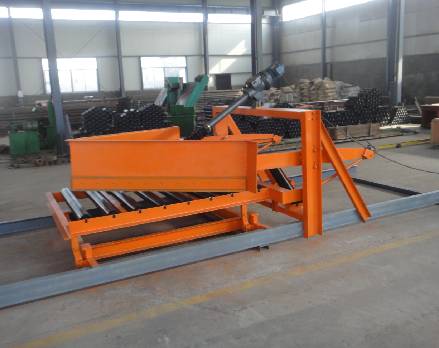 Afrikaans
Afrikaans  Albanian
Albanian  Amharic
Amharic  Arabic
Arabic  Armenian
Armenian  Azerbaijani
Azerbaijani  Basque
Basque  Belarusian
Belarusian  Bengali
Bengali  Bosnian
Bosnian  Bulgarian
Bulgarian  Catalan
Catalan  Cebuano
Cebuano  Corsican
Corsican  Croatian
Croatian  Czech
Czech  Danish
Danish  Dutch
Dutch  English
English  Esperanto
Esperanto  Estonian
Estonian  Finnish
Finnish  French
French  Frisian
Frisian  Galician
Galician  Georgian
Georgian  German
German  Greek
Greek  Gujarati
Gujarati  Haitian Creole
Haitian Creole  hausa
hausa  hawaiian
hawaiian  Hebrew
Hebrew  Hindi
Hindi  Miao
Miao  Hungarian
Hungarian  Icelandic
Icelandic  igbo
igbo  Indonesian
Indonesian  irish
irish  Italian
Italian  Japanese
Japanese  Javanese
Javanese  Kannada
Kannada  kazakh
kazakh  Khmer
Khmer  Rwandese
Rwandese  Korean
Korean  Kurdish
Kurdish  Kyrgyz
Kyrgyz  Lao
Lao  Latin
Latin  Latvian
Latvian  Lithuanian
Lithuanian  Luxembourgish
Luxembourgish  Macedonian
Macedonian  Malgashi
Malgashi  Malay
Malay  Malayalam
Malayalam  Maltese
Maltese  Maori
Maori  Marathi
Marathi  Mongolian
Mongolian  Myanmar
Myanmar  Nepali
Nepali  Norwegian
Norwegian  Norwegian
Norwegian  Occitan
Occitan  Pashto
Pashto  Persian
Persian  Polish
Polish  Portuguese
Portuguese  Punjabi
Punjabi  Romanian
Romanian  Russian
Russian  Samoan
Samoan  Scottish Gaelic
Scottish Gaelic  Serbian
Serbian  Sesotho
Sesotho  Shona
Shona  Sindhi
Sindhi  Sinhala
Sinhala  Slovak
Slovak  Slovenian
Slovenian  Somali
Somali  Spanish
Spanish  Sundanese
Sundanese  Swahili
Swahili  Swedish
Swedish  Tagalog
Tagalog  Tajik
Tajik  Tamil
Tamil  Tatar
Tatar  Telugu
Telugu  Thai
Thai  Turkish
Turkish  Turkmen
Turkmen  Ukrainian
Ukrainian  Urdu
Urdu  Uighur
Uighur  Uzbek
Uzbek  Vietnamese
Vietnamese  Welsh
Welsh  Bantu
Bantu  Yiddish
Yiddish  Yoruba
Yoruba  Zulu
Zulu Conveyor Roller System for Efficient Material Handling and Transportation Solutions
Understanding Conveyor Roller Assembly A Key Component in Material Handling
In the world of material handling, efficiency and reliability are paramount. One of the critical components that plays a vital role in this process is the conveyor roller assembly. This system is designed to facilitate the smooth and effective movement of goods, making it an indispensable part of various industries, including manufacturing, warehousing, and distribution.
A conveyor roller assembly typically consists of several key elements rollers, shafts, bearings, and frames. These components work together to provide a robust solution for transporting materials over both short and long distances. The rollers are the most visible part of the assembly and are crucial for the movement of items along the conveyor system. They are usually cylindrical in shape and are made from materials like steel, plastic, or rubber, depending on the type of application and load requirements.
The efficiency of a conveyor roller assembly largely depends on its design and construction. High-quality rollers should be durable and able to withstand heavy loads without deformation. They must also have a smooth surface to minimize friction, which ultimately reduces wear and tear on both the rollers and the transported goods. Additionally, the rollers should be designed to allow for easy rotation, enabling them to spin freely as materials move across them.
conveyor roller assembly

Bearings are another essential component in the conveyor roller assembly. They are installed inside the rollers and allow for smooth rotation while supporting the load. The type of bearing selected can greatly influence the overall performance of the conveyor system. For example, sealed bearings are often used in environments with dust or moisture, as they help prevent contamination, thus prolonging the lifespan of the rollers.
The frames of the assembly provide structural support and determine the spacing between the rollers. A well-designed frame will ensure that the rollers are positioned optimally to facilitate the efficient movement of materials. Additionally, the frame’s material should be chosen based on factors such as weight capacity, environmental conditions, and overall durability. Steel frames are often used for heavy-duty applications, while lighter materials might be appropriate for less demanding scenarios.
Understanding the maintenance of conveyor roller assemblies is also essential for maximizing their lifespan and operational efficiency. Regular inspection and maintenance can help identify wear and prevent breakdowns. Lubricating bearings and replacing damaged rollers are key practices that ensure the smooth operation of the conveyor system.
In conclusion, the conveyor roller assembly is a fundamental part of modern material handling processes. Its components work in harmony to provide efficient transportation of goods across various industrial sectors. By focusing on high-quality design, suitable materials, and proper maintenance practices, businesses can enhance their operational efficiency, reduce downtime, and ultimately improve their bottom line. Whether for a simple warehouse setup or a complex manufacturing line, understanding and optimizing the conveyor roller assembly is essential for success.
-
Revolutionizing Conveyor Reliability with Advanced Rubber Lagging PulleysNewsJul.22,2025
-
Powering Precision and Durability with Expert Manufacturers of Conveyor ComponentsNewsJul.22,2025
-
Optimizing Conveyor Systems with Advanced Conveyor AccessoriesNewsJul.22,2025
-
Maximize Conveyor Efficiency with Quality Conveyor Idler PulleysNewsJul.22,2025
-
Future-Proof Your Conveyor System with High-Performance Polyurethane RollerNewsJul.22,2025
-
Driving Efficiency Forward with Quality Idlers and RollersNewsJul.22,2025





























